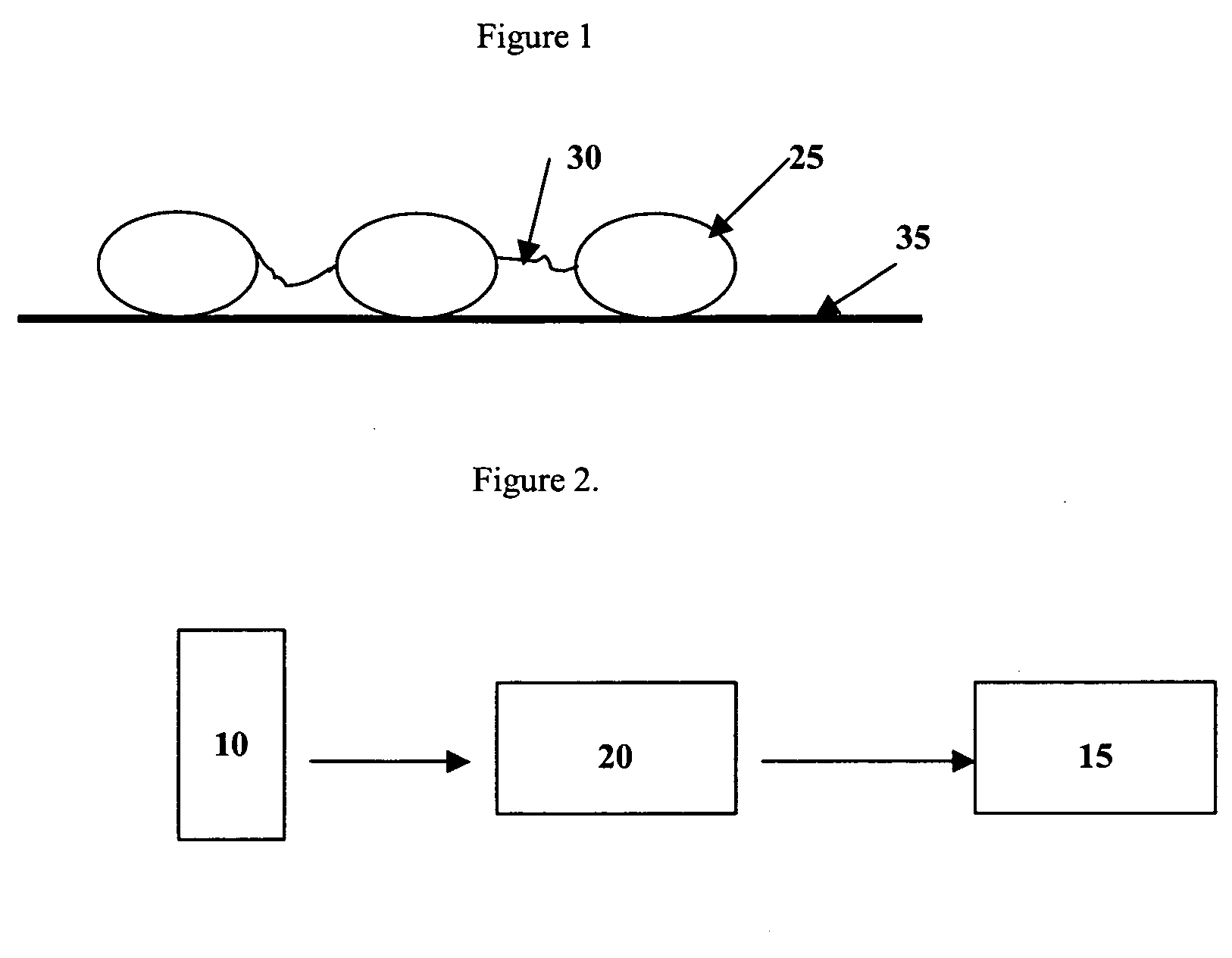Method for imaging an array of microspheres
a microsphere and array technology, applied in the field of methods, can solve the problems of high manufacturing cost of techniques, inability inability to accurately identify beads, so as to improve the ability to distinguish one color of beads, the effect of detailed spectral characterization of beads
- Summary
- Abstract
- Description
- Claims
- Application Information
AI Technical Summary
Benefits of technology
Problems solved by technology
Method used
Image
Examples
Embodiment Construction
[0019] The following is a detailed description of the preferred embodiments of the invention, reference being made to the drawings in which the same reference numerals identify the same elements of structure in each of the several figures.
[0020] The present invention teaches a method for imaging a random or ordered array of microspheres, also referred to as “beads”, immobilized in a coating on a substrate. The microspheres are desirably formed to have a mean diameter in the range of 1 to 50 microns; more preferably in the range of 3 to 30 microns and most preferably in the range of 5 to 20 microns. It is preferred that the concentration of microspheres in the coating is in the range of 100 to a million per cm2, more preferably 1000 to 200,000 per cm2 and most preferably 10,000 to 100,000 per cm2.
[0021] Although microspheres or particles having a substantially curvilinear shape are preferred because of ease of preparation, particles of other shape such as ellipsoidal or cubic parti...
PUM
 Login to View More
Login to View More Abstract
Description
Claims
Application Information
 Login to View More
Login to View More - R&D
- Intellectual Property
- Life Sciences
- Materials
- Tech Scout
- Unparalleled Data Quality
- Higher Quality Content
- 60% Fewer Hallucinations
Browse by: Latest US Patents, China's latest patents, Technical Efficacy Thesaurus, Application Domain, Technology Topic, Popular Technical Reports.
© 2025 PatSnap. All rights reserved.Legal|Privacy policy|Modern Slavery Act Transparency Statement|Sitemap|About US| Contact US: help@patsnap.com

